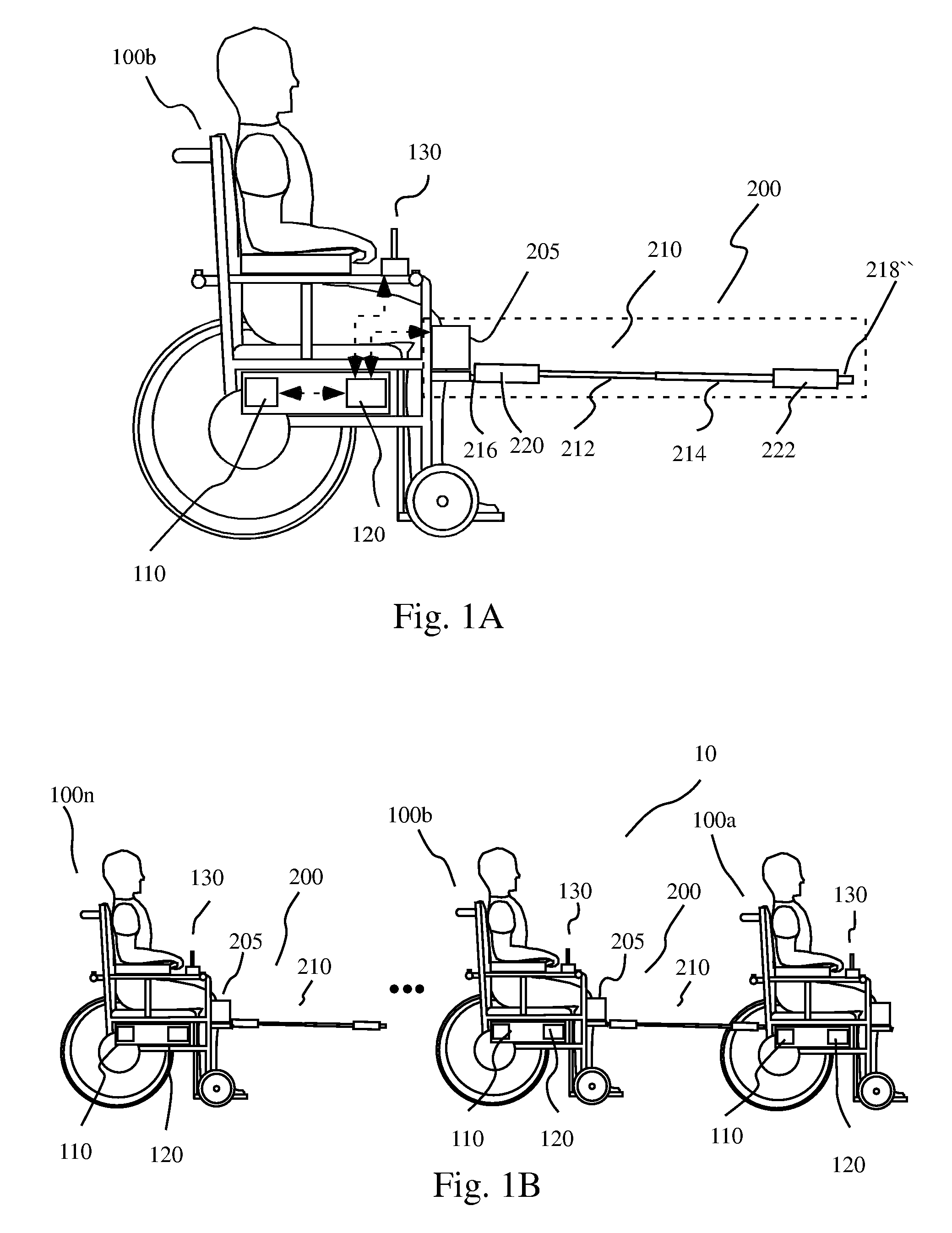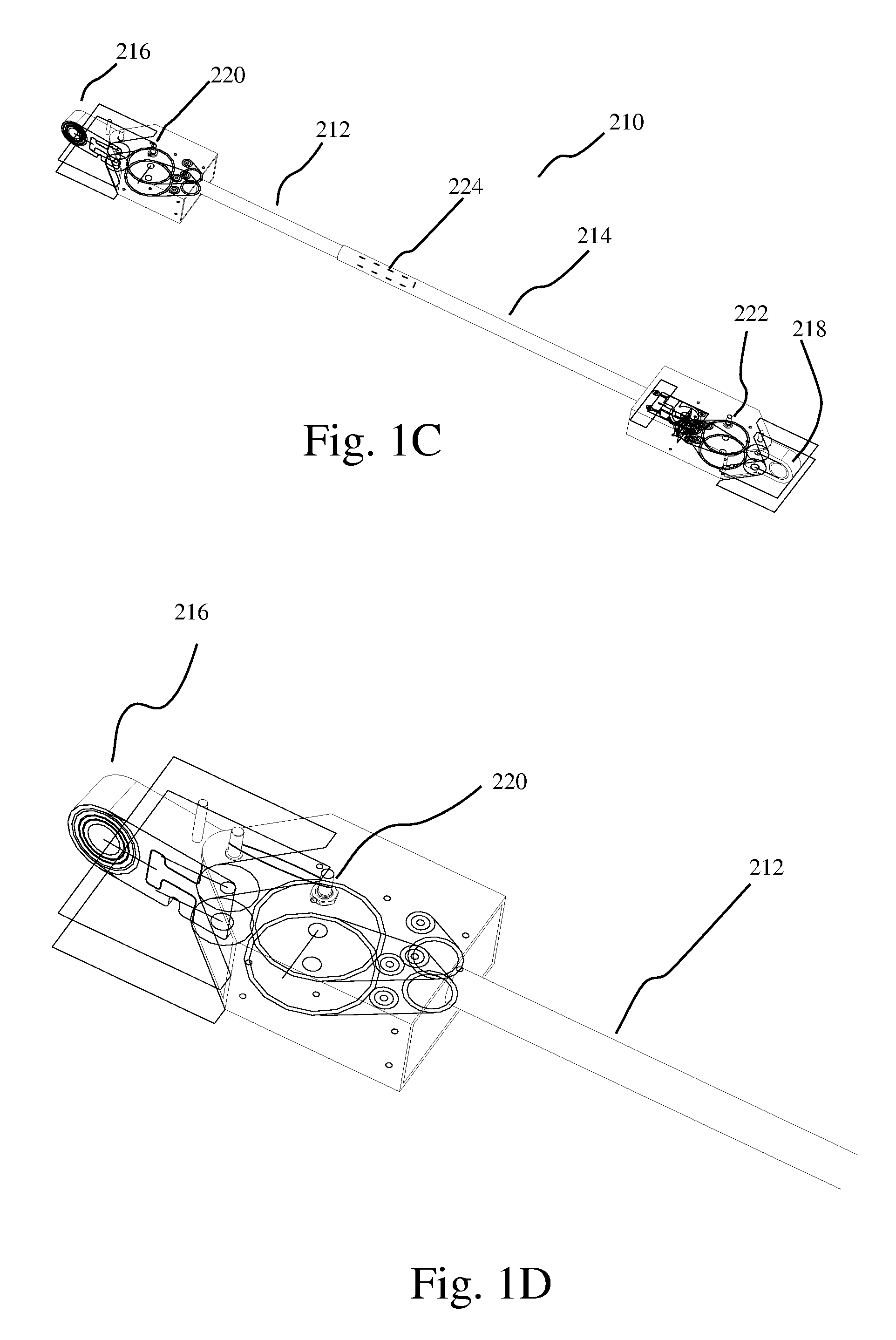Powered vehicle convoying systems and methods of convoying powered vehicles
- Summary
- Abstract
- Description
- Claims
- Application Information
AI Technical Summary
Benefits of technology
Problems solved by technology
Method used
Image
Examples
Embodiment Construction
[0067]The present invention provides devices, systems and methods that, for example, allow at least one powered vehicle (that is, a mobile unit including at least one powered drive mechanism such as a motor or engine) to move together in a group or convoy. As used herein, the word “vehicle” refers to any mobile unit or device. In several embodiments, at least one physical or virtual “linkage” can be established between adjacent vehicles. In general, each trailing vehicle of the convoy includes at least one convoying system of the present invention in operative or communicative connection with the drive mechanism of the powered vehicle. The powered vehicle can, for example, include a control system or controller in operative and / or communicative connection with the drive mechanism thereof to control the drive mechanism. In such embodiments, the convoying system of the present invention can be in communicative connection with the drive mechanism of the powered vehicle via the controll...
PUM
 Login to View More
Login to View More Abstract
Description
Claims
Application Information
 Login to View More
Login to View More - R&D
- Intellectual Property
- Life Sciences
- Materials
- Tech Scout
- Unparalleled Data Quality
- Higher Quality Content
- 60% Fewer Hallucinations
Browse by: Latest US Patents, China's latest patents, Technical Efficacy Thesaurus, Application Domain, Technology Topic, Popular Technical Reports.
© 2025 PatSnap. All rights reserved.Legal|Privacy policy|Modern Slavery Act Transparency Statement|Sitemap|About US| Contact US: help@patsnap.com



